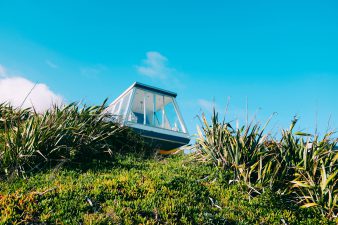
Cousin to the cannabis plant, hemp is also considered a healing herb – and one that is legal anywhere to grow. High amounts of CBD make it an interesting anti-anxiety medicine for many folks.
The hemp industry is booming, and an increasing number of acres of farmland that were once used for other crops are being handed over to hemp farmers. For both hemp smokers and environmental activists, however, some of the attributes of outdoor-grown hemp might be less than ideal. Check out these five simple reasons that indoor hemp flower is better for our bodies and the ecosystems that surround us.
1. It’s better for soil
Hemp is a bioaccumulator, which means that it sucks contaminants out of soil. At first glance, this attribute might make it seem like hemp and making hemp oil is good for soil, but contaminants aren’t the only substances that Cannabis sativa accumulates. If you choose to grow hemp indoors, there are many advantages to using a hydroponic system.
In addition to removing contaminants, hemp also removes everything else present in soil including nutrients. Once nutrients are stripped from soil by greedy crops like hemp, it can take generations for them to regenerate. When multiple hemp crops are grown in succession in the same soil, nutrient depletion can become so severe that growing crops in that area again becomes impossible.
Indoor-grown hemp, on the other hand, is commonly grown in small pots of topsoil, which leaves vital tracts of farmland fully intact. It’s even possible to grow indoor hemp hydroponically, and this method does not use any soil whatsoever.
2. It’s more efficient
Indoor-grown hemp flower produces 2-3 times the cannabinoids as outdoor-grown flower. Therefore, indoor-grown flower can be used to make more than twice the number of finished products as outdoor-grown flower, and the effects of indoor-grown hemp flower are also more than twice as potent as those offered by outdoor-grown hemp flower.
As a result, indoor hemp cultivators can grow less flower but still provide better results than outdoor hemp cultivators. This increase in efficiency is better for the environment, and hemp bud that’s more potent is also a better deal for consumers.
3. It reduces pesticide and herbicide use
Growing hemp outdoors exposes your crop to all sorts of different dangers. In addition to environmental fluctuations and the threats posed by natural disasters, outdoor hemp crops are frequently plagued by pests and invasive plant species that damage foliage, eat buds, and compete for root space.
To protect against ravaging insects and invasive weeds, outdoor hemp cultivators are forced to rely on pesticides and herbicides. While many outdoor hemp cultivators use organic, non-toxic pest-killers and weed-deterrents, these substances can still be dangerous.
Other hemp growers simply use the cheapest and most plentiful agricultural tools available with little thought for the environment or their end consumers. Pesticides and herbicides hurt the planet, and if they remain in hemp flower once it is dried, cured, and ready for distribution, these harmful chemicals can also hurt consumers.
Indoor hemp, on the other hand, is cultivated in climate-controlled, hermetically sealed environments in which invasive species can’t flourish. If pests show up on indoor hemp plants, the affected plants can be quarantined and treated individually, removing the possibility of environmental pollution and making it easier to ensure that pesticides don’t end up in hemp products intended for consumers.
4. It’s less prone to contamination
Even with the best organic and sustainable cultivation methods in place, hemp producers can’t control the agricultural practices of their neighbors. The vast majority of outdoor hemp cultivation operations are located within major agricultural zones, and while hemp is generally a cleaner industry than most sectors of the agricultural economy, cultivators of other crops routinely use products that contain heavy metals, petrochemicals, and other harmful substances.
When neighboring farmers spray their fields with dangerous pesticides and herbicides, this airborne mist can make its way onto hemp crops. The water runoff from neighboring fields can also make its way into hemp cultivation areas via either above-ground or below-ground routes.
Unless you grow your hemp miles away from any trace of civilization, it’s impossible to keep outdoor hemp crops perfectly clean. With indoor hemp, however, it’s easy to keep your growing environment perfectly sealed, which utterly prevents heavy metals or other contaminants from making their way into your end products.
5. It reduces monocropping
The basic premise of regenerative agriculture is that soil performs better when it is planted with multiple crops. In some cases, these crops may rotate throughout multiple seasons, but in other circumstances, more than one type of crop may be planted in a particular area at the same time.
Almost the entirety of the contemporary agricultural economy, however, is composed of monocropping operations. Monocropping is when a single crop is grown in an area over and over again, and this practice depletes soil while also harming the surrounding environment.
Since hemp has suddenly become such a profitable crop, most cultivators have decided to engage in monocropping instead of interspersing their hemp plants with other plant species. As we covered above, hemp also strips soil of its nutrients with disturbing efficiency, so monocropping with this particular crop is especially harmful.
Growing hemp indoors, however, is a type of sustainable monocropping. Since indoor-grown hemp doesn’t leach nutrients from soil, it doesn’t harm the environment, and growing hemp indoors leaves more space in agricultural communities that farmers can use to engage in sustainable, multi-crop operations.


